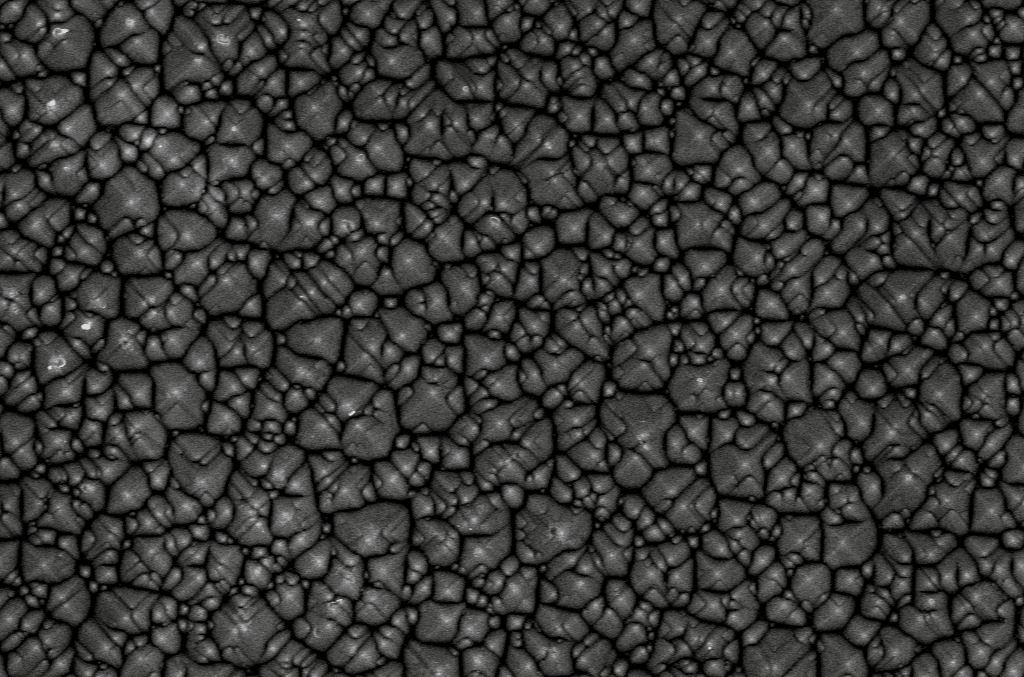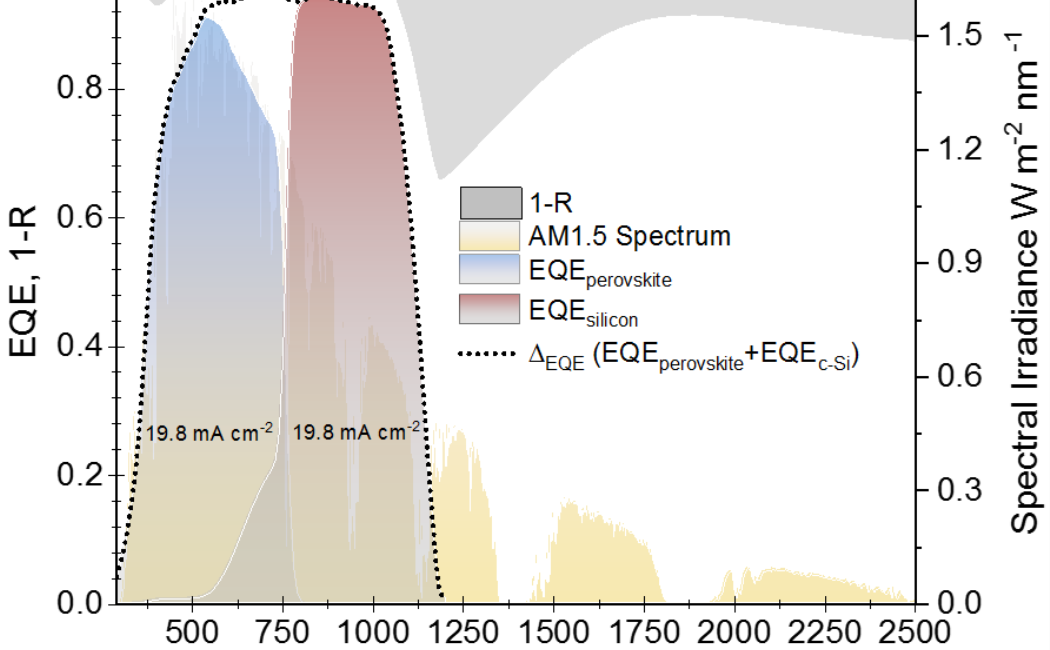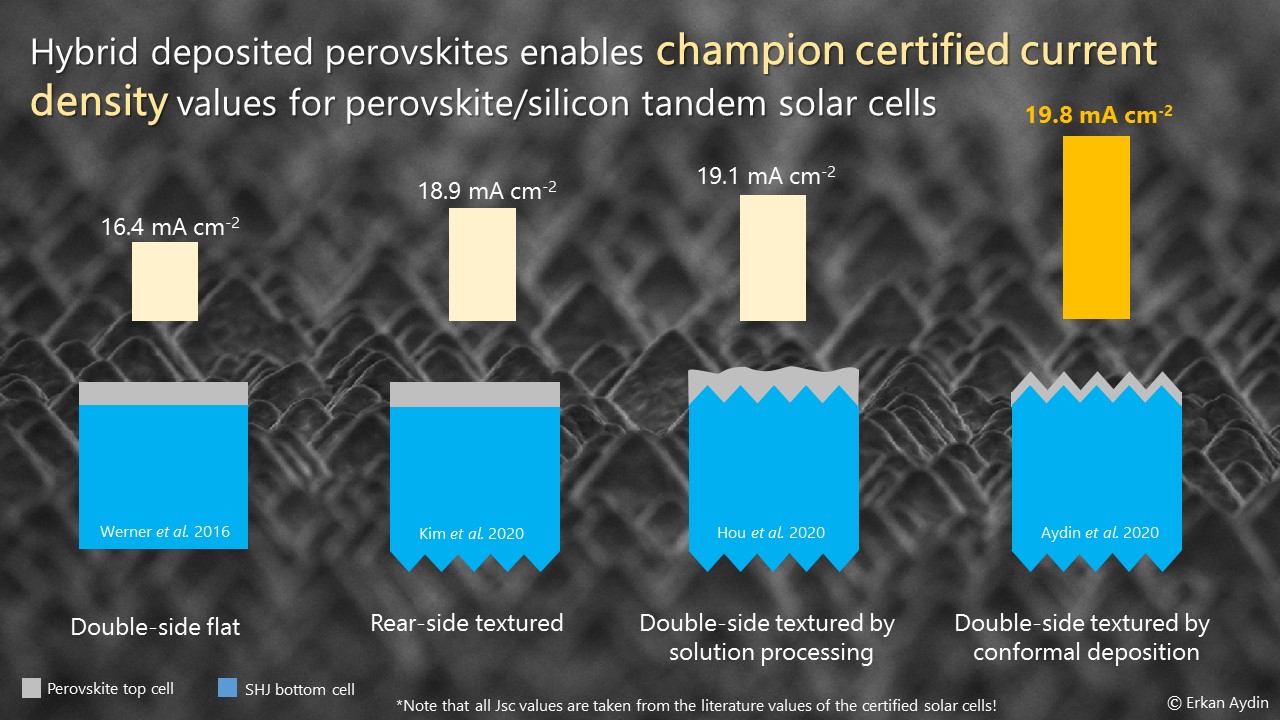


01 December, 2020
Perovskite solar cells have been showing rapid progress in recent years, and nowadays, the PCE values exceeded 29%. The field keeps growing in the direction beyond the single-junction Shockley–Queisser limit. (1) In this direction and materials development, several improvements have been made in terms of device configurations.
The first examples of the tandems were on double side flat silicon bottom cells,(2) and later on, for better light-harvesting rear-side textured silicon bottom cells were started being used. (3) In 2020, KPV-LAB (in collaboration with the University of Toronto) introduced the solution-processed perovskite tandems on textured silicon bottom cells, which brought huge advancements in the current density values of the cells. (4) Beyond this structure, as also introduced first by Sahli et al. in 2018, conformally deposited perovskite can further reduce the reflection losses. In this direction, Dr. Erkan Aydin and colleagues from KPV-LAB further optimized this design and reached the 19.8 mA cm-2 current density value, which is the highest current density for perovskite/silicon tandem solar cells as of October 2020. (5)
The team is working to improve this value further to achieve current density values exceeding 19.8 mA cm-2. Achieving high current density values has critical importance to further increase the PCE of the tandem solar cells due to the high voltage of such devices.

References